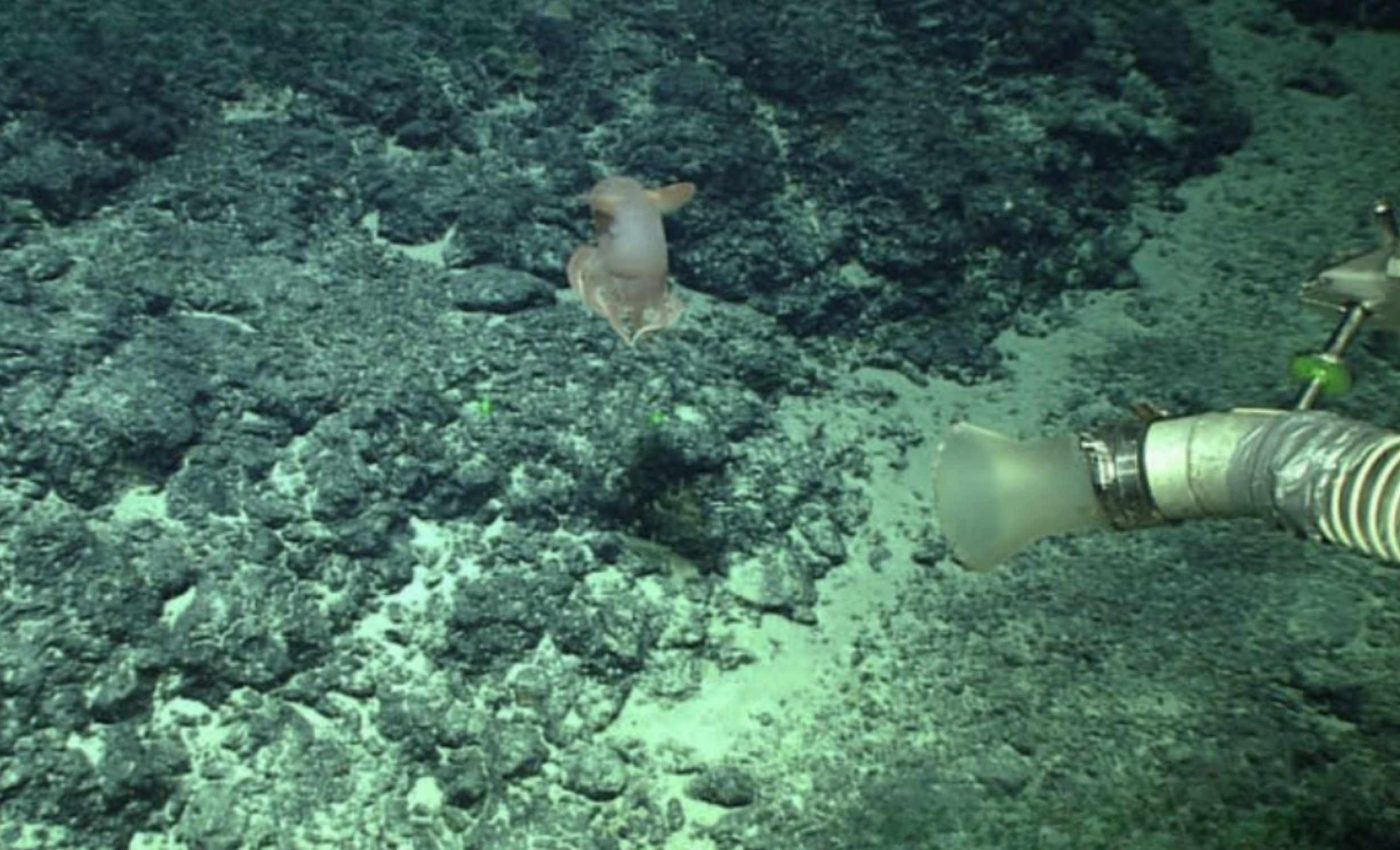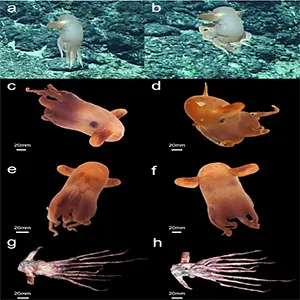
Biologists discover a new species of Dumbo octopus in the very deep Pacific
A new dumbo octopus species, Grimpoteuthis feitiana, was accidentally discovered in a scientific blind spot of the deep Pacific Ocean.
It carries a name that nods to the flying figures in China’s Dunhuang cave murals, tying a modern marine discovery to an ancient artistic tradition.
The animal was collected on the Caroline Seamount in the Western Pacific during a 2017 expedition at about 1,240 meters, roughly 4,070 feet, where daylight cannot reach.
The find is formally described in a peer reviewed study that names the species Grimpoteuthis feitiana and places it within the finned, deep dwelling octopus clan.
Story of Grimpoteuthis feitiana
The work was led by Yan Tang of the Institute of Oceanology at Chinese Academy of Sciences (CAS), with collaborators in Qingdao and Beijing.
The team used integrative methods that combine anatomy and DNA to establish that the specimen represents a species new to science.
Dumbo octopuses belong to the cirrate group, octopuses that have fins on the mantle and internal supports instead of the stiff, muscular build of their shallow water cousins.
They are also the deepest living octopuses known, according to the Natural History Museum (NHM) in London.
This animal likely spends its life near the seafloor, a lifestyle biologists call benthic. At these depths, temperature is low, food is patchy, and every movement costs precious energy.
How dumbo octopuses live
Unlike the familiar jet propelled octopuses of reefs, cirrate octopods advance mainly by flapping their fins and shaping the web between their arms. They, as NOAA puts it, “rely on fins as their primary means of locomotion”.
Many individuals appear to be neutrally buoyant, which lets them hover with little effort and switch among several movement modes as needed. That observation is documented in a species profile by the Aquarium of the Pacific.
This low gear lifestyle fits the deep sea’s economy. Energy saved on fast escapes can be spent on growth, reproduction, and long waits between meals.

Grimpoteuthis feitiana, art, and science
The epithet Feitian points to the flying apsaras of the Dunhuang murals, figures associated with music and graceful movement across Buddhist art in northwest China.
China’s official culture art library describes these apsaras as embodiments of musical and dance divinities that appear throughout the grottoes.
Placing that reference into a species name signals cultural context alongside taxonomy. It also gives readers a shorthand for the octopus’s fin flapping swimming style, which is central to how these animals navigate the deep.
Names matter in biology because they carry memory. A name can preserve a link to place, to indigenous knowledge, or to the aesthetic sparks that often precede curiosity driven work.
What the genetics add
The team sequenced the complete mitochondrial genes of the new species and another Grimpoteuthis feitiana individual from a different seamount.
These small genomes power the cell’s energy factories and often carry signals of adaptation to unusual environments.
The species was identified as new to science and named Grimpoteuthis feitiana sp. Nov.. The analysis also reports evidence that parts of deep sea octopus mitochondrial proteins have experienced adaptive change.
“Phylogenetic analyses strongly supported the monophyly of the Grimpoteuthis. Certain residues in the mitochondrial genes of deep sea octopods have undergone positive selection,” wrote Tang.
Why this find matters
Documenting one more species in a hard to reach habitat might feel incremental. It is not, because each confirmed species tightens the tree of life and sharpens our estimates of how many lineages the deep sea hides.
A single specimen also highlights the gaps in our sampling and the need for repeat visits to the same underwater mountains.
The authors themselves urge larger sample sizes to strengthen both morphological and phylogenetics based conclusions.
Conservation planning relies on knowing what is present, where it lives, and how it makes a living. For deep sea animals like Grimpoteuthis feitiana with slow movement and sparse populations, even local disturbances can have outsized effects.
The Caroline Seamount lies far offshore, yet human actions reach this zone through climate shifts, microplastics, and interest in mining seafloor minerals.
Basic natural history like this study supplies the starting point for any future stewardship.
Next steps for Grimpoteuthis feitiana
Future work can search neighboring seamounts for more individuals to pin down the species’ range. Additional genomes will test whether the same set of mitochondrial changes appears across populations.
Remotely operated vehicles able to watch without disturbing can add crucial behavior and habitat notes. Stomach content or eDNA surveys can sketch the food web links this octopus depends on.
The discovery closes one small gap in a very large map. It also reminds us that curiosity, craft, and cultural memory can travel together.
The study is published in Organisms Diversity & Evolution.
—–
Like what you read? Subscribe to our newsletter for engaging articles, exclusive content, and the latest updates.
Check us out on EarthSnap, a free app brought to you by Eric Ralls and Earth.com.
—–













